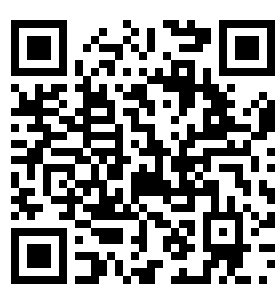
2021 was undoubtedly the year of Non-Fungible Tokens (NFTs for short). For the uninitiated, NFTs are blockchain-based digital assets whose units are designed to be unique and therefore non-interchangeable. NFTs store metadata on blockchains that is usually associated with files containing media such as images, videos, and audio, or tokenized representation of physical objects such as real estate. NFT collectors have sent over $40 billion to NFT marketplaces in 2021. This number is only going to be a fraction of the amount in 2022 since as of May 1, 2022, the tally has already touched over $37 billion. According to a report published by Chainanalysis, the number of active NFT traders has been consistently going up quarter-by-quarter since Q3 2020.
2021 年无疑是非同质化代币(简称 NFT)的一年。对于外行来说,NFT 是基于区块链的数字资产,其单位被设计为独一无二的,因此不可互换。 NFT 将元数据存储在区块链上,这些元数据通常与包含图像、视频和音频等媒体文件,或已将关联代币化的房产等物理对象。 NFT 收藏家在 2021 年向 NFT 市场发送了超过 400 亿美元。这个数字只是 2022 年金额的一小部分,因为截至 2022 年 5 月 1 日,这一数字已经超过 370 亿美元。根据 Chainanalysis 发布的一份报告,自 2020 年第三季度以来,活跃的 NFT 交易者数量一直在逐季度增长。

The initial wave of NFTs started with artwork and collectibles (for example, Beeple’s record-breaking auction for $69M), profile pictures, digital avatars and in-game assets which made NFTs synonymous to 2D visual art. However, NFTs have been morphing into other forms, particularly music which has a bigger outreach than fine art.
NFT 的最初浪潮始于艺术品和收藏品(例如,Beeple 的6900 万美元的破纪录拍卖)、个人资料图片、数字化身和游戏内资产,这些使 NFT 成为 2D 视觉艺术的代名词。然而,NFT 一直在演变成其他形式,尤其是比美术具有更大影响力的音乐。
Far more people love music than fine art. Music is clearly for all because of its much broader accessibility. In fact, it is believed that the fine art sector is largely supported by only 10,000 estimated art collectors, whereas the music industry generates $57B in revenue from billions of people, with over half a billion users on paid streaming services.
热爱音乐的人远多于热爱艺术的人。音乐显然适合所有人,因为它具有更广泛的可访问性。事实上,美术部门在很大程度上仅由 估计10,000位艺术收藏家,而音乐产业产生 来自数十亿人的 570亿 美元收入,有超过 10亿 付费流媒体服务的用户。
Moreover, industry dynamics make music particularly ripe for Web3 disruption. For the majority of artists, Spotify which is one of the biggest consumer products in the sector has become a tool to get discovered, not paid. According to a report from Delphi Digital, the top 10% of artists generate 99.4% of the streams on Spotify. Streaming platforms are now pushing for even lower artist payouts. NFTs therefore offer a lifeline for more artists to earn a living from their work, which is believed to accelerate their adoption.
此外,行业的发展也使音乐特别适合 Web3 来颠覆。对于大多数艺术家来说,Spotify 是该行业最大的消费产品之一,它已成为一种获得曝光的工具,而不是付费的工具。根据 Delphi Digital 的报告,前 10% 的艺术家 生成 Spotify 上 99.4% 的流量。流媒体平台现在甚至 推动 更低的艺术家支出。因此,NFT 为更多艺术家提供了一条从工作中谋生的生命线,这被认为会加速其的采用。
The market for NFTs is steadily becoming more than JPEGs and MP3s as they can serve as proof of ownership of real-world assets as well. There are several ongoing projects using NFTs for ticketing, real estate as well as a way to certify ownership of real-world items such as watches and cars.
NFT 的市场正在稳步超越 JPEG 和 MP3,因为它们也可以作为真实世界资产所有权的证明。有几个正在进行的项目使用 NFT 进行票务、房地产以及证明手表和汽车等现实世界物品所有权的方式。
NFT 的可扩展性问题 (Scalability Issues with NFTs)
The life of every NFT begins with an NFT launch (also sometimes called a mint or drop). An NFT mint event is where a new collection is first created, sold, and distributed to buyers, who then decide to hold or trade it in secondary markets. As NFTs are often minted in very limited supply, NFT mint events often create gas war that clogs the network with a large number of failed transactions.
每个 NFT 的生命周期都始于 NFT 的发布(有时也称为铸币或落地)。 NFT 铸币活动是首先创建、出售新收藏并将其分发给买家,然后买家决定在二级市场持有或交易它。由于 NFT 通常以非常有限的供应量铸造,因此 NFT 铸造活动通常会引发gas战争,从而因大量失败的交易而堵塞网络。
Several popular Layer 1s as well as Layer 2 platforms have fallen short of meeting the scalability needs of NFT mint events. Below are a few real-world incidents around scalability issues faced by NFT events on Ethereum, Polygon PoS, Arbitrum and Solana.
几个流行的Layer 1和Layer 2平台未能满足 NFT 铸币的可扩展性需求。以下是围绕以太坊、Polygon PoS、Arbitrum 和 Solana 上的 NFT 所面临的可扩展性问题的一些真实活动。
Ethereum

Ethereum is the largest smart contract ecosystem and high gas fees are quite common and not uniquely due to NFTs. However, data shows that NFTs are contributing more traffic to Ethereum than popular ERC20s and stablecoins. Since July 2021, NFT’s share of total Ethereum token transfers has overtaken stablecoins and the major ERC-20s. In light of this, it is not surprising that a popular NFT project can create congestion on Ethereum during the mint process.
以太坊是最大的智能合约生态系统,高昂的 Gas 费非常普遍,也并不是 NFT 独有的。然而数据显示,与流行的 ERC20 和稳定币相比,NFT 为以太坊贡献了更多的流量。自 2021 年 7 月以来,NFT 在以太坊代币转移总量中的份额已超过稳定币和主要的 ERC-20。有鉴于此,流行的 NFT 项目在铸币过程中会在以太坊上造成拥塞也就不足为奇了。
This was evident during the NFT sale event organised by Yuga Labs on May 1, 2022 on Ethereum. The demand for the NFTs was so high that despite implementing an on-chain KYC process and a maximum allowed minting of 2 NFTs per KYC’d wallet, the Ethereum network was not able to handle the sudden surge in demand. As a result, Yuga Labs asked its community to think about migrating the project on its own chain. This was recently put to vote and about 47% of users voted in favour of an APEChain.
这在 Yuga Labs 于 2022 年 5 月 1 日在以太坊上组织的 NFT 销售活动中很明显。对 NFT 的需求如此之高,以至于尽管实施了链上 KYC 流程并且每个 KYC 钱包最多允许铸造 2 个 NFT,但以太坊网络无法应对突然激增的需求。因此,Yuga Labs 要求其社区考虑将项目迁移到自己的链上。最近对此进行了投票,大约 47% 的用户投票支持 APEChain。

Arbitrum
Arbitrum had planned a 2 month long marketing campaign called The Arbitrum Odyssey that would give users the ability to experience different on-chain Arbitrum ecosystem projects and in return, receive exclusive NFTs.
Arbitrum 计划了一个为期 2 个月的名为 The Arbitrum Odyssey 的营销活动,让用户能够体验不同的链上 Arbitrum 生态系统项目,并获得独家 NFT。
As the first week completed and claims for the first NFT went live, transactions on Arbitrum hit an all-time high resulting in transaction fees on Arbitrum being higher than that on Ethereum. As a result, just after a week after the launch, the Arbitrum team had to abruptly pause the program.
随着第一周的结束和 第一个 NFT 的声索上线,Arbitrum 上的交易创下历史新高,导致 Arbitrum 上的交易费用高于在以太坊上。结果,在发布一周后,Arbitrum 团队不得不突然暂停该程序。

Polygon PoS
Even though this event was not necessarily an NFT mint event, a play-to-earn game Sunflower was contributing over 40% of gas fees on Polygon PoS in early January. The game was short-lived but at its peak had about 500k users.
尽管此活动不一定是 NFT 铸币活动,一个赚钱游戏向日葵贡献了超过 40% 的gas ,在一月初的 Polygon PoS 上。该游戏是短暂的,但在其高峰期有大约 50 万用户。
The tokenomics of the game was designed so that as more people joined the game, the overall supply increased, and therefore rewards decreased. This meant that someone playing in the early days received significantly more rewards than late joiners. This scheme led to high participation, which attacked the Polygon network.
游戏的代币经济学被设计成随着更多人加入游戏,整体供应增加,因此奖励减少。这意味着早期玩家比后期玩家获得的奖励要多得多。该计划导致高参与度,从而攻击了 Polygon 网络。
Solana
The Solana network was down on May 2, 2022 for 7 hours due to a large number of transactions created by NFT minting bots.
由于 NFT 铸币机器人创建的大量交易,Solana 网络于 2022 年 5 月 2 日停机 7 小时。
One of the Solana validators even proposed to censor transactions destined to the Metaplex contract to mitigate the issue resulting in other NFT issuers requesting validators not to block their contracts.
一位 Solana 验证者甚至提议审查以 Metaplex 合约为目标的交易,以缓解导致其他 NFT 发行人要求验证者不要阻止其合约的问题。



现存解决方案的限制 (Existing Solutions and their Limitations)
Ethereum remains the network of choice for NFT projects, however many of them have been exploring alternative scaling options. We explore these solutions below:
以太坊仍然是 NFT 项目的首选网络,但其中许多项目一直在探索替代扩展选项。我们在下面探索这些解决方案:
1. EVM sidechains and Layer 2s: OpenSea is the largest NFT marketplace and by adding support for Polygon PoS, several projects have started to mint NFTs natively on Polygon. Even though Polygon offers cheaper gas fees and improved scalability, liquidity appears to be concentrated on Ethereum which makes Layer 2s and EVM side chains an unattractive option for project owners.
1.EVM 侧链和Layer 2: OpenSea 是最大的 NFT 市场,通过增加对 Polygon PoS 的支持,一些项目已经开始在 Polygon 上本地铸造 NFT。尽管 Polygon 提供了更便宜的 gas 费用并提高了可扩展性,但流动性似乎集中在以太坊上,这使得Layer 2和 EVM 侧链对项目所有者来说是一个没有吸引力的选择。
One possible way to circumvent the liquidity problem is to mint NFTs on a Layer 2 or EVM sidechain (owing to their low gas fess) and then require the NFT holders to bridge the assets over to Ethereum (to capture the liquidity). Once the NFTs are on Ethereum, users can then enjoy the liquidity that Ethereum offers.
规避流动性问题的一种可能方法是在Layer 2或 EVM 侧链上铸造 NFT(由于其低 gas费用),然后要求 NFT 持有者将资产桥接到以太坊(以获取流动性)。一旦 NFT 在以太坊上,用户就可以享受以太坊提供的流动性。
While there are several NFT bridges out there, they do not seem to have captured any reasonable market share. There are several reasons why NFT bridges are not a popular choice among users and project owners. First, many of the popular bridges for fungible tokens have been hacked in the past and therefore the security of NFT bridges is often put to question. Second, as bridging is left to the users, liquidity may become fragmented as some users may not bridge their assets. The resulting fragmentation of liquidity could in fact be more detrimental compared to assets staying on the sidechain itself.
虽然那里有几个 NFT 跨链桥,但它们似乎没有获得任何合理的市场份额。 NFT 跨链桥在用户和项目所有者中不受欢迎的选择有几个原因。首先,许多流行的同质化代币的跨链币桥过去曾被黑客入侵,因此 NFT 跨链桥的安全性经常受到质疑。其次,由于跨链桥是留给用户的,流动性可能会变得分散,因为一些用户可能无法跨链他们的资产。与留在侧链本身的资产相比,由此产生的流动性分散实际上可能更有害。


We further argue that even if the liquidity improves on the EVM sidechains or Layer 2s, scalability will become a concern for NFT projects as evidenced in the case of Arbitrum and Polygon PoS.
我们进一步认为,即使 EVM 侧链或layer2的流动性得到改善,可扩展性也将成为 NFT 项目的一个问题,Arbitrum 和 Polygon PoS 的案例就证明了这一点。
2. Alternative Layer 1s: A handful of alternative Layer 1s particularly, Solana has attracted substantial NFT volume on its chain and it is steadily becoming a viable option for several NFT projects. In fact, the largest NFT marketplace on Solana named Magic Eden has a trading volume very close to that of OpenSea on Ethereum.
2.替代的Layer 1: 少数替代Layer 1,特别是 Solana 在其链上吸引了大量的 NFT 交易量,并且正在稳步成为多个 NFT 项目的可行选择。事实上,Solana 上最大的 NFT 市场名为 Magic Eden,其交易量与以太坊上的 OpenSea 非常接近。

Despite having the required liquidity, Solana has struggled in the past to handle large scale mint events.
尽管拥有所需的流动性,但 Solana 过去一直在努力处理大型铸币活动。
Similar to EVM sidechains and Layer 2s, Layer 1s are designed to be general purpose which means that a single popular NFT drop has the potential to consume the entire blockspace leading to a network congestion.
与 EVM 侧链和Layer 2类似,Layer 1被设计为通用目的,这意味着单个流行的 NFT落地有可能消耗整个区块空间,导致网络拥塞。
3. Application-specific chains: As mentioned above, some NFT and gaming projects that have a broader utility-driven roadmap than just the NFT drop have been exploring application-specific scaling solutions. Currently, there are solutions like Avalanche’s subnet, Cosmos-style sovereign chains and others. However, these solutions are not ideal for NFT mint events which generally do not last long and want the ability to move to a base-chain like Ethereum or Solana to enjoy the liquidity.
3.特定应用链: 如上所述,一些 NFT 和游戏项目具有更广泛的实用驱动路线图,而不仅仅是 NFT落地,一直在探索特定于应用程序的扩展解决方案。目前有 Avalanche 的子网、Cosmos 式的主权链等解决方案。然而,这些解决方案对于 NFT 铸币并不理想,因为此类活动通常不会持续很长时间,并且希望能够转移到像以太坊或 Solana 这样的基础链以享受流动性。
4. Non First-Come-First-Serve Mechanism: A majority of the NFT events on Ethereum in 2021 were organised on a first-come-first-served (FCFS) basis, where a large number of people attempted to get hold of a limited number of NFTs. This resulted in users sending a large number of transactions that eventually failed. In many cases, the percentage of failed transactions was as high as 90% and these transactions clogged the network.
4.非先来先得机制: 2021 年以太坊上的大多数 NFT 活动都是在先到先得 (FCFS) 的基础上组织的,大量的人试图获得一个数量有限的NFT。这导致用户发送大量最终失败的交易。在许多情况下,失败交易百分比高达 90%,这些交易阻塞了网络。

数据源 Source: https://www.paradigm.xyz/2021/10/a-guide-to-designing-effective-nft-launches
As a result, some projects have decided to explore non-FCFS type drops such as auctions or raffles. However, non-FCFS drops have not yet become an industry-wide standard because of the complexity that these mechanisms introduce for end users. For instance, an auction can last for days if not weeks to give ample time for users to bid which in turn could drive down community engagement. Also, in comparison to FCFS, where, a winning user has to send only one transaction, auctions often involve several bid transactions.
因此,一些项目决定探索非 FCFS 类型的落地,例如拍卖或抽奖。但是,由于这些机制为最终用户引入的复杂性,非 FCFS 落地尚未成为行业范围的标准。例如,拍卖可能会持续数天甚至数周,以便为用户提供充足的竞标时间,这反过来可能会降低社区参与度。此外,与 FCFS 相比,获胜用户只需发送一笔交易,拍卖通常涉及多笔投标交易。
To be continued…
未完待续

